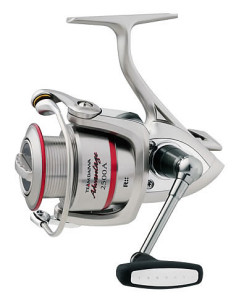 We have had some questions from some of our readers who are just getting started in bass fishing and I’d like to take the time to answer one of those that seems to be recurring.
We have had some questions from some of our readers who are just getting started in bass fishing and I’d like to take the time to answer one of those that seems to be recurring.
It seems as though there is some confusion about line size and spinning reels and what pound test you can use on a spinning reel. I’m going to try to give you the short answer without muddying up the water any more. I am going to keep this discussion focused on just spinning reels so it won’t apply to baitcasters, closed face spinning reels or any other type reel.
Line Capacity
All open faced spinning reels have line capacity information on their spools. Usually, these numbers include capacity for three different line sizes. They could be 2, 4, and 6 pound capacities or 4, 6, and 8 or higher.
Sorry to take the long way around but now we have to discuss the available sizes of reels. In fishing vernacular, there are several “series” that most manufactures make available. They are 10, 20, 30, 40 and sometimes higher. Basically, the smaller the number, the smaller and lighter the reel. Furthermore, a 10 series reel will hold much less line than a 30 series reel and will not be capable of holding higher test pound lines and functioning the way the manufacturer intends.
I use the 10 series for trout and pan fish while I use either the 20 or 30 series for bass fishing depending on the weight of the lure that I will be throwing on that rig.
Now back to a specific question from an aspiring bass fisherman. It seems as though she has lost several spinnerbaits due to the line snapping during her cast. Her reel has line capacity ratings for 4, 6, and 8 pound line. She is wondering if she can spool that reel with 12 pound line to alleviate the problem.
Middle Finger Rule
Here is my rule of thumb. I don’t like to exceed the pound test that is printed on the spool and tend to use the middle figure when spooling line onto that reel. This doesn’t mean that the reel can’t handle higher test pound lines. It can but won’t do it as well as a larger sized reel.
If you have a reel that says 4, 6 and 8, that rig will be more efficient for throwing smaller baits than the average sized spinnerbait. It should also be mated with a rod that is rated for the same pound test as the reel. When you are choosing a rod and reel combo, it is important for both components to be rated similarly. Together, they will function much better if they are matched for line and lure size.
If you intend to use heavier lures, like spinnerbaits, get a reel that is rated for between 12 and 20 pound line along with a rod that is rated for the same. You will find that neither the rod or the reel will be inadequate for the other and this will make for a more balanced rig which in turn makes for a more pleasant experience on the water.
Remember, the balance of the combo is more important than the actual weight and causes less fatigue in the long run. Before you buy your next rig, take the time to go to a reputable tackle store and try several combination before you buy. Try to be as specific as you can as far as what type and weight of lure you will be throwing with your new rig. Remember that no single combo will handle all types and weights of lures well.
Hope this helps but if it doesn’t, please let me know and I’ll answer any further questions. Good luck and we’ll see ya’ on the water.